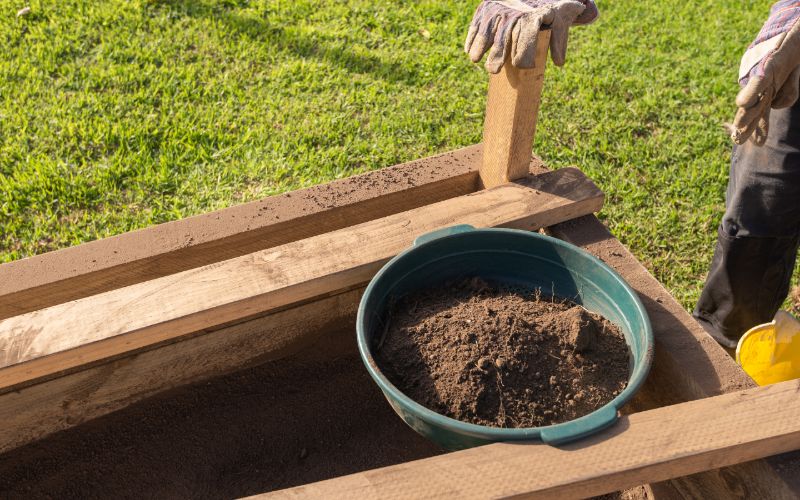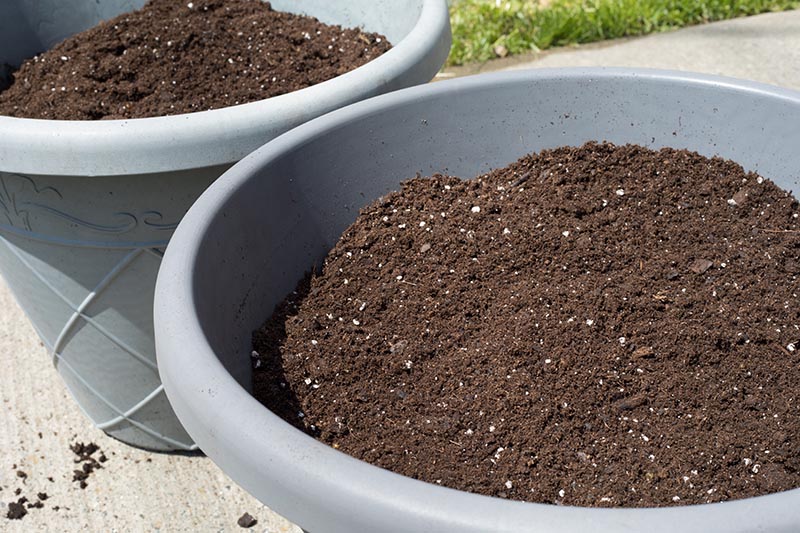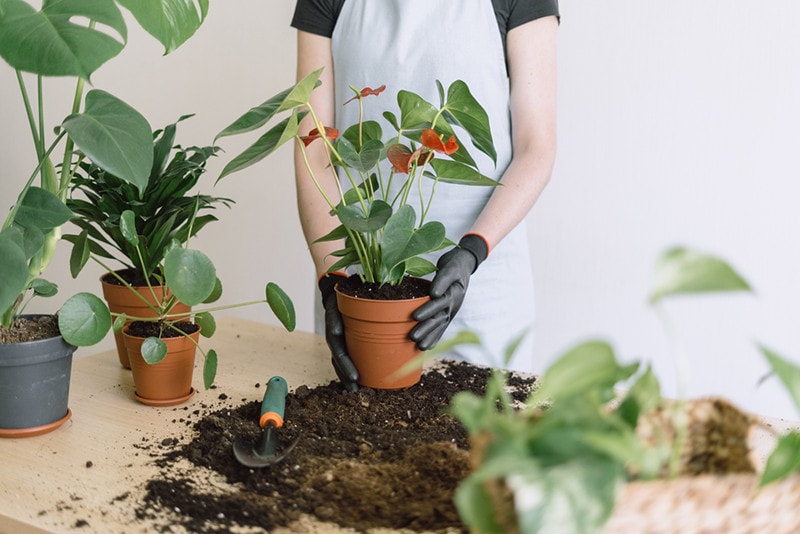How to Make Potting Soil for Anthuriums – What You Need to Know
-
Pete Ortiz
- Last updated:

As a symbol of hospitality, the anthurium plant is a welcome sight in any home, gifting a warm spirit with its striking coloration. Though it’s easy to grow indoors, attentive care is essential to enjoy its exceptional displays throughout the year. Anthurium isn’t immune to root rot and other common houseplant issues, and proper preparation will ensure its long-term health and low-maintenance growth.
Preparation starts with a solid foundation in a well-developed potting mix. Despite its easygoing nature, an informed planting process with a balanced blend of the proper materials will make all the difference for your anthurium plant’s beauty. Learn the best way to set yourself up for success with this guide on making potting soil for anthuriums.
The Right Potting Soil for Anthuriums – 2 Options

Anthuriums need moist but not wet soil. A balanced soil and regular monitoring are crucial to ensure proper drainage. The texture should be coarse and aerated to allow enough space for free-moving moisture but offer enough retention to feed the roots. Ideal acidity is 6.0–6.5 pH, and the soil should be rich in nutrients.
Store-bought blends can often make appropriate potting mixes for anthurium plants. But you’ll generally see the best results and easiest growing experience with a custom blend.
1. Easy Orchid Mix Blend for Anthuriums

As most orchids and anthuriums are epiphytes, the two tropical plants have similar growing needs. They don’t want soggy soil, preferring the loose consistency and high humidity of their native conditions instead. Orchid mixes focus on aeration and drainage. You’ll generally find coarse blends like bark, peat moss, perlite, and charcoal to give it the appropriate density.
Using a coarse orchid mix as a base for a homemade blend will yield an optimal anthurium potting soil with minimal input. To improve a store-bought orchid mix’s texture for anthuriums, add sand, pumice, peat moss, wood charcoal, coconut husk, or cocopeat. Compost will provide vital nutrients, but you’ll need a coarse blend or large materials to keep the soil loose.
2. Homemade Anthurium Potting Soil
The beauty of anthuriums, other than the plants themselves, is the number of ways to make homemade potting soil. You have loads of flexibility to ensure everything is affordable, accessible, and agreeable. With a few rough guidelines, sample recipes, and ingredient ideas, you’ll be set to make your custom anthurium-boosting blend today.
Anthurium potting soils only need 3–4 ingredients to maximize a plant’s development. You can build a blend by starting with three overarching categories:
- Coarse, woody ingredients: Coconut husk, pine bark
- Porous ingredients: Perlite, pumice, charcoal, peat moss, cocopeat
- Organic ingredients: Compost, peat moss, cocopeat (coconut coir)

One benefit of making a DIY potting mix is eco-friendliness. With many orchid mixes containing peat moss, safer alternatives like cocopeat make anthuriums even more satisfying to grow.
With this basic outline of essential materials, you can pick one ingredient from each category. Take several cuttings from your anthuriums, and enjoy experimenting with different blends. Mixing them in equal proportions is a safe starting point, but you can test several material combinations in varying amounts. Here are a few blend ideas to spark some inspiration:
- 50% pine bark, 20% cocopeat, 30% compost
- 40% coconut husk, 20% perlite, 20% cocopeat, 20% vermicompost
- 30% pine bark, 20% charcoal, 20% pumice, 30% compost
After gathering your ingredients, blend them well in a large container before filling your anthurium pots. Wear gloves and a face mask while working to avoid handling or inhaling dust and debris.
What Kind of Pot Is Best for Anthuriums?
You can choose porous pots, such as clay, or slow-draining options, like plastic, fiberglass, or glazed ceramic, for your anthuriums. Porous pots keep the potting mix from holding too much water, which is a good fit for disciplined plant parents with a tight watering schedule. When underwatering is a concern, you can skip a day once in a while without an issue if you choose non-porous pots. Plastic and other hard materials keep water in the soil rather than wick it away.
Whichever anthurium pot type suits your style, always check that your container has drainage to prevent root rot. When repotting, you’ll only need a pot about 2 inches wider than the previous one. Anthuriums don’t grow quickly but often develop an extra foot over 2–4 years. By increasing the pot size by 20–25%, you’ll be able to go a few years before having to repot your anthurium plant.

 Final Thoughts
Final Thoughts
Potting soil is only the start of the simplicity involved in caring for anthuriums. These gracious houseplants are happy to pay us back for thoughtful care with gorgeous foliage to last for months. Start a solid base with these tips and recipes for anthurium potting soils, and discover the incredible potential that awaits in your home.
Featured Image Credit: Okrasiuk, Shutterstock
Contents


